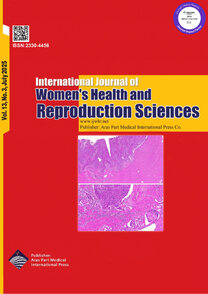| Original Article | |
| Fetal Fibronectin Test Performance in Patients at Low Risk for Preterm Delivery | |
| Sumithra Jeganathan1, Alexander G. Shilkrut1, Aleksandr M. Fuks2, Sari J. Kaminsky1 | |
| 11Department of Obstetrics and Gynecology, Metropolitan Hospital, New York, NY, USA 2Department of Obstetrics and Gynecology, Queens Hospital, Health+Hospitals, New York, NY, USA |
|
|
IJWHR 2020; 8: 347-352 DOI: 10.15296/ijwhr.2020.56 Viewed : 11233 times Downloaded : 3023 times. Keywords : Fetal fibronectin, Preterm labor, Preterm labor symptoms |
|
| Full Text(PDF) | Related Articles | |
| Abstract | |
Objectives: Spontaneous preterm birth is a leading cause of neonatal death. Fetal fibronectin (fFN) testing in cervical secretions between 22-34.6 weeks of gestation is used to predict non-delivery within the next 7 days in patients with symptoms of preterm labor. The objective of this study is to analyze fFN test performance in a group of patients with low risk for preterm delivery that presented with preterm labor symptoms, and to evaluate how the results of fFN testing influenced management decisions. Materials and Methods: Patients after preterm delivery (gestational age 24.0-36.6 weeks) and patients who underwent fFN testing in Metropolitan Hospital, NYC Health+Hospitals, New York, NY, from January 1, 2015 to December 31, 2015 were identified and reviewed. Patients with positive fFN test results (fFN+; >50 ng/dL) were compared to patients with negative fFN test results (fFN-). Results: Among 77 patients identified, 66 (86%) were fFN- and 11 (14%) fFN+; 15 patients (78%) who delivered preterm were not tested with fFN. Preterm birth rate during the study period was 1.9%. There was no difference in maternal or neonatal characteristics between the two groups. Among fFN-, 4 patients (6%) delivered preterm, while among fFN+, none delivered preterm. In both groups, none delivered within 7 days of testing. Compared to fFN-, fFN+ had higher rates of admissions (36% vs 0%; P < 0.001) and steroid administration (82% vs 0%; P < 0.001). Conclusions: In this retrospective analysis, use of fFN testing as an initial screening test for patients with symptoms of preterm labor in this low risk population did not result in improved clinical outcomes and was associated with a higher rates of hospital admissions and steroid administration. |
Cite By, Google Scholar
Google Scholar
PubMed
Online Submission System
 IJWHR ENDNOTE ® Style
IJWHR ENDNOTE ® Style
 Tutorials
Tutorials
 Publication Charge
Women's Reproductive Health Research Center
About Journal
Publication Charge
Women's Reproductive Health Research Center
About Journal
Aras Part Medical International Press Editor-in-Chief
Arash Khaki
Mertihan Kurdoglu Deputy Editor
Zafer Akan























